You would think everyone and every company would want to know how to create great written content. You’d be wrong. They don’t.
I believe most companies simply want to create written content—blogs, for the most part—and don’t care whether or not it’s great. And I submit, as evidence:
- The Internet at large: It’s polluted with dreadful blogs.
- The blog graveyard: A shocking percentage of bloggers pull the plug.
- The proliferation of content farms: Low-cost writer brokerages continue to thrive because marketers want more pages, posts, URLs, emails… Essentially, they want more web real estate.
- The atrophy of writing fees: Now that everyone and their cousin-in-law provide content writing services, it’s become Walmart.
- The bell curve: As interest, and activity, in content marketing continues climbing, a normal distribution curve suggests only a small percentage will achieve excellence.
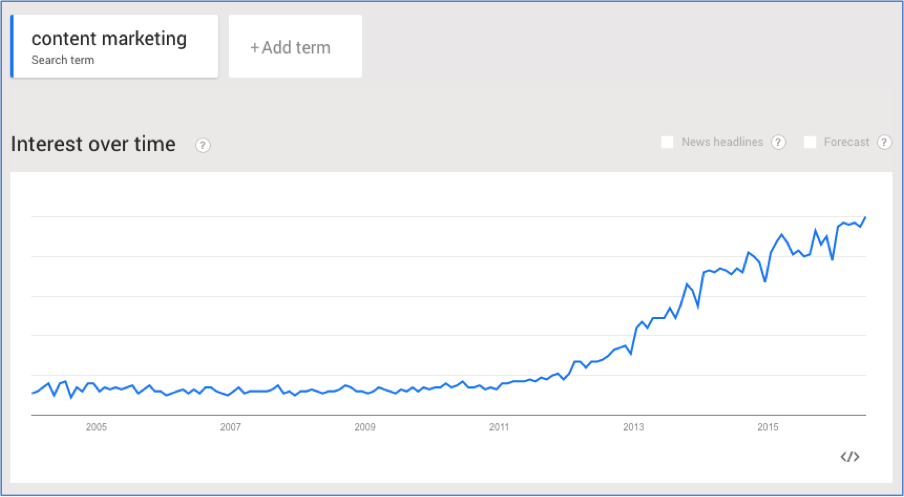 Google Trends data indicates interest in content marketing has risen steadily since 2011.
Google Trends data indicates interest in content marketing has risen steadily since 2011.
I suspect a line charting content quality would look different.
It not great, then why?
I wonder if the masses that produce low or mediocre quality content understand content marketing, and in particular, the purpose of written content. It’s hard to deny many companies simply feel it’s an obligation of doing business, perhaps like getting listed in the yellow pages once was.
“The competition has a blog, so we should too.” That sort of thing.
I may fail to deliver new revelations here, but I’m going to reiterate what you can accomplish with content marketing. Understand, first and foremost, the purpose is to help get and keep customers.
Great written content can:
- Rank high on search. The Zero Moment of Truth (ZMOT), as it’s come to be called, is when a potential buyer performs an online search. At that point, your content (and brand) gets discovered or it doesn’t. Fittingly, I share what Google served first when I searched “ZMOT.”
- Earn traffic. The marketer’s hope is the result of ranking high is getting a searcher to click-through to the company’s website. The value of having your content listed and seen on search pales in comparison to prompting a visit. Understand visits from search have a relatively high intent to buy compared to visits from other channels.
- Generate leads. Great content draws the prospect closer to the brand. This may mean the prospect requested a subscription, a downloadable offer, an opportunity to attend an event, a demonstration, trial, consultation, meeting, evaluation, or any number of actions indicating interest.
- Sell. A satisfied content consumer may develop trust in the brand and consequently become a customer.
- Earn loyalty. Content should target existing customers for a variety of reasons: satisfaction, retention, upsell, referrals and brand advocacy.
The benefits above are more standard than complete. Great written content can accomplish additional objectives, say, secure donations (for a charity); inspire applications (for an HR department); and so on.
Poorly written content will accomplish none of the above. There is no point in wasting resources, however slight, on writing and publishing shallow, uninspired, copycat content.
Let’s talk “who” before “how”
It takes a threesome to create great written content. You need a:
- Strategist—Great written content comes with context. It’s created to help fulfill a business objective.
- Subject matter expert—Content writing for marketing purposes is not news reporting or journalism. The great stuff showcases the insights of experts.
- Talented writer—It’s unlikely your strategy and subject matter are unique. You have competition. In the long run, the prize goes to the producers of the best-written content.
Your threesome may or may not comprise three people. One person may fulfill one, two, or all three roles. Just be sure someone wears these three hats.
14 ingredients found in the tastiest written content
I did a good deal of searching and reading before writing what follows and I’ll quote some of the nuggets I found. Unsurprisingly, I found a useful “ingredients” infographic from Damian Farnworth at Copyblogger with an emphasis on writing style. And a post by Zach Bulygo and Sean Work on the Kissmetrics blog hammered home nine important points.
Still, I didn’t find a list of the “ingredients” or “elements” of great content I felt was thorough or complete. I came up with a list of fourteen. I’ll expand on each, but first, let’s look at the list in the form of a nutritional label. (You’re welcome to copy, republish and share it.)
1. Purpose
In the nutritional label, I explain, by “purpose,” I mean your message should have a clear point. Neil Patel expands on this nicely on the Entrepreneur blog:
“An article is supposed to communicate a point. When your article has a point, it gives readers something memorable to latch onto. They are more compelled to share it, comment on it, and engage with it. An article with a point is an article that accomplishes a mission and is therefore successful.”
I’ll expand on “purpose” with another idea, an even bigger purpose, if you will. If you missed it, go back and read the final part of the label: Content Marketing Institute’s definition of content marketing. It includes the purpose of content marketing: driving profitable customer action.
Perhaps the idea could be simplified to simply “sell.” You could make a case some written content aims to entertain instead of sell. Additionally, you could make a case content marketing is more effective when it avoids “hard sell.”
But don’t lose sight of the prize. If you’re creating content in the interest of marketing, it should elicit action—or you won’t be doing it for long.
2. Relevance
Your written content should address the reader’s pain and/or help bring them pleasure. It should enhance their life at work, at play, or in some way. There’s only one way to pull this off consistently. You have to develop empathy for your reader.
You have to relate to be relevant.
(This is an excerpt from Word Power: 11 Techniques for Writing More Persuasive Copy,
a SlideShare by Feldman Creative, below. Shout out to @AnnHandley @MarketingProfs.)
3. Education
“Education is the most powerful weapon to change the world.”
~ Nelson Mandela
I found that quote in the post Why Education is a Powerful Content Marketing Strategy, by Joe Pulizzi of CMI.
Education has changed the marketing world too.
I’ve shared this before. I love it. It’s a quick exchange of ideas in the comments stream of the post I mentioned.
So much has been written about this simple idea. I dug into it in one of my favorite articles, Your Guide to Mastering the Most Critical Content Marketing Skill.
The skill is teaching, which is the essence of most effective content marketing efforts. Think about the role of the teacher and how it maps to content marketing:
- The teacher is the authority.
- The teacher sets the agenda.
- The teacher delivers the lessons.
- The teacher answers the questions.
- The teacher instructs the student what to do.
4. Emotional triggers
Here’s where content marketing writers and copywriters have the same job: move readers.
Don’t make the mistake of believing your readers rely on rationale to make decisions. It’s what we feel that drives our decisions. While effective written content is purposeful, relevant and educational, it can become great when it trips the reader’s emotional triggers.
5. Timeliness or timelessness
Here’s the definition of “news,” according to Merriam-Webster.com:
- a report of recent events
- previously unknown information
- something having a specified influence or effect
It’s not easy to publish news. You have to act fast. In other words, be timely.
Here’s the definition of “evergreen:”
- having foliage that remains green and functional through more than one growing season — compare deciduous
- retaining freshness or interest:perennial
We could do without the (a) part, but it does reveal why the word’s a popular metaphor in the content discussion. Evergreen content is timeless. It’s easier to create timeless vs. timely works, but it’s far from easy.
If your written content is neither, it’s likely old news or bound to be. And neither is great.
6. Truth
All I want is the truth now. Just gimme some truth now.
~ John Lennon
Lennon didn’t want to hear, see or read “a pocketful of hope” (or soap). He wanted the truth. As do I. As do you. As do your readers.
There’s a dreadful amount of conjecture flying around the web. Content writers shamelessly misinterpret, re-use, misuse, and abuse statistics and quotes to support their position. Credibility flies out the window.
Take care to backup the points you make with research, facts and quotes you can cite to the original source.
Want to tell a story to color your content? Fine. Tell a true story. Want to illustrate a point? Great. Share research that can be traced and substantiated. Want to state your opinion? All good. Just make sure you state that’s what it is.
“Research is necessary for quality blog posts. To provide the highest quality information, you should only use authoritative sources such as universities, government agencies, trade associations, research studies, and other expert material. Any opinions you offer should be backed up by citing relevant sources.”
Thanks to Nicole Karlis, who shared these ideas on the Scripted blog.
7. Ease
This is interesting…
As you see, in this CMO Council study from 2013, “Ease of access, understanding and readability”
ranked second in the most valued characteristics of B2B content.
Many content marketers blatantly fail the “ease” test. And many do so unknowingly by not recognizing the online reading experience differs from reading words on paper. It’s really that simple.
On paper—that is, in books, newspapers, magazines, and mail—readers are prone to tolerate pages densely populated with copy. Online they don’t.
Heed this reality and compose your pages accordingly. Think skimmability.
- Write shorter passages
- Use more white space and increase line breaks
- Use ample visual cues
- Add images and captions
- Set key points apart to break the monotony
- Include subheads generously
- Create lists (You might have skipped these points if I crammed them all into a paragraph.)
Great written content isn’t great at all if its presentation deflects readers. Content writers must also design a satisfying reading experience. Easy does it.
8. Originality
“Perhaps the best lesson that I ever learned as a blogger was that people are drawn to others who speak their mind, who have something unique to say and who say it in a creative and fresh way. Say what everyone else is saying in the same way that everyone else is saying it and you’re almost guaranteed of being largely ignored.”
Nicely put, back in 2007, by Darren Rouse on ProBlogger.
And I have little to add. “Regurgitation” sounds bad because it is.
However, my friend and content mastermind Andy Crestodina has something to add…
“Another way to be original? Do research and publish the results. It’s new, it’s yours and it’s totally original. Research is killer content. It’s easier to create than you might think, and it gets way more links and shares than other content.”
Here are a few types of research you get get into your content mix (courtesy of Orbit Media Studios).
9. Voice
Find your voice. If you’ve read writing lessons, you’ve heard the tip before. And usually, the directive is followed by some advice for pursuing it. But is it a pursuit? Is it something you can find? Don’t you already have a voice?
Tricky stuff.
“The best way to find your voice is to write more. Writing brings clarity, deepens our understanding, strengthens our ideas.”
That’s blogger extraordinaire Henneke Duistermaat, from Why You Should Stop Searching for Your Authentic Voice.
I like Henneke’s point of view. You need not go looking for what you already have. Perhaps better advice than “find your voice” is “use your voice.” Where writers stumble is where they try to write like someone else.
Note Darren’s advice again, where he says you shouldn’t say things in the way everyone else does. Great content is, can, and will be, written about common topics.
Imagine being advised not to write a story about falling deeply in love with someone from “the other side of the tracks.” Shakespeare did that. You can’t out-write Will. It’s not good advice. Good advice would be don’t try to write like the Bard.
Be your own bard. Of course, you should edit your copy. But don’t cut out the “you” part.
10. Great headline or title
In the nutritional label, I suggested a headline needs stopping power. Would it be more accurate to call it “going power?” A great headline compels readers to go forth and get into it.
Call it what you will, but call this content writing rule number one: Thou shalt aim to arouse the reader with a magnetic title.
There are an infinite number of ways I could have written the rule. I chose one. But I considered many. And rather than attempt to deliver a headline writing mini-course here or walk through the headline formula hall of fame, I’m going to ask you to settle for this one tip…
Write a lot of headlines. I might have written 25 for this post.
I even put 12 of my favorite contenders through the blog post headline analyzer tool from CoSchedule. It’s not foolproof, but it does score headlines by tapping into a ton of data to help you gain social shares and SEO value.
A great headline is one that __________________________ .
If you asked 101 content writers, you might find that blank filled in 101 different ways. My answer would be: makes a promise. (And hopefully the piece that follows delivers on it.)
BTW, I don’t mean to be stingy. You can read (and save) my HEADLINES cheat sheet here if you’re hungry for more.
11. Friendliness
“Pretend that you’re having a conversation with a friend and write like that.”
~ Darren Rouse, again, this time from The 4 Pillars of Writing Exceptional Blogs.
Yep. The best way I can think of to expand on Darren’s thought is to drop the “pretend” part. Simply write to a friend.
That’s what I’m trying to do here. And my friend, we’ve been hanging out for nearly 2300 words now. If you’re reading at an average speed (and not clicking through to the resources I’ve provided links to), we’re about 11 minutes into our rendezvous. We’ve probably done this before. And I hope we will again.
So how do you have conversations? You ask questions.
What else? You keep it casual. You say “you.” You don’t overthink what you say.
You try to be sensitive, responsive, respectful, non-judgmental and fun.
You share. Share thoughts. Share opinions. You crack jokes. Good or bad. Sentence fragments? Whatever.
You lighten up. You don’t complicate shit. No one likes that.
12. Direction
Here’s Neil Patel again, purveyor of fine (and seemingly infinite) blog posts…
“You have all this wonderful long content with an amazing point, a beautiful structure, internal links, great images, and flawless style and grammar. Now what?”
“Every post needs a call to action. The reader is ready to respond, to do, to click, to engage. What do you want them to do? Whether it’s capturing an email address, visiting another page, purchasing a product, or downloading an ebook, you need to have an explicit call to action for each article, every time.”
Tell you reader where to go. And how to get there. And why.
Try to exercise some influence and powers of persuasion.
If your written content is great, readers will want to share it. And that’s great. Having your content shared might even be the ultimate indication of its greatness.
Don’t make it difficult for readers to do you the favor of sharing. Display share bars that are easy to find and use. Feed readers suggestions and shortcuts for sharing your content.
Embellish your content with digital flourishes people are prone to share: images, quotes, infographics, GIFs, video clips.
Ask for shares. And share your appreciation when you get them.
14. Optimization
If great content falls in the forest, that sucks. It’s not a philosophy; it’s a reality. It’s tough to call content great when it fails to reach an audience.
While you may have a decent mailing list and an active approach to sharing your content via social media, the best way to find new readers over the long haul is to earn a spot on page one of search.
You have to optimize your written content for search engines. It’s not as complex or scary as it sounds. You need to:
- Understand SEO
- Understand keyword research and semantic search
- Apply on-page optimization tactics
- Write informative meta descriptions for the search engines
- Understand the most important ranking factors
So there you have it. I’m finally done running down and through the list of ingredients I believe get mixed into the recipe for great written content. And it feels great.
Get a copy of SEO Simplified for Short Attention Spans on Amazon.
Need a content marketing consultant?



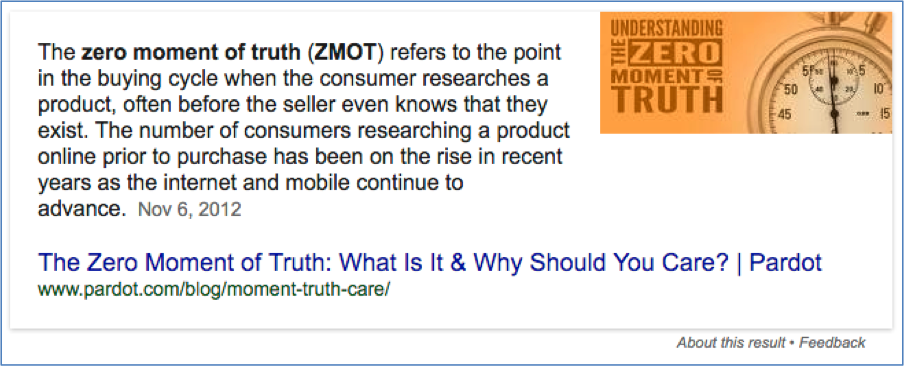
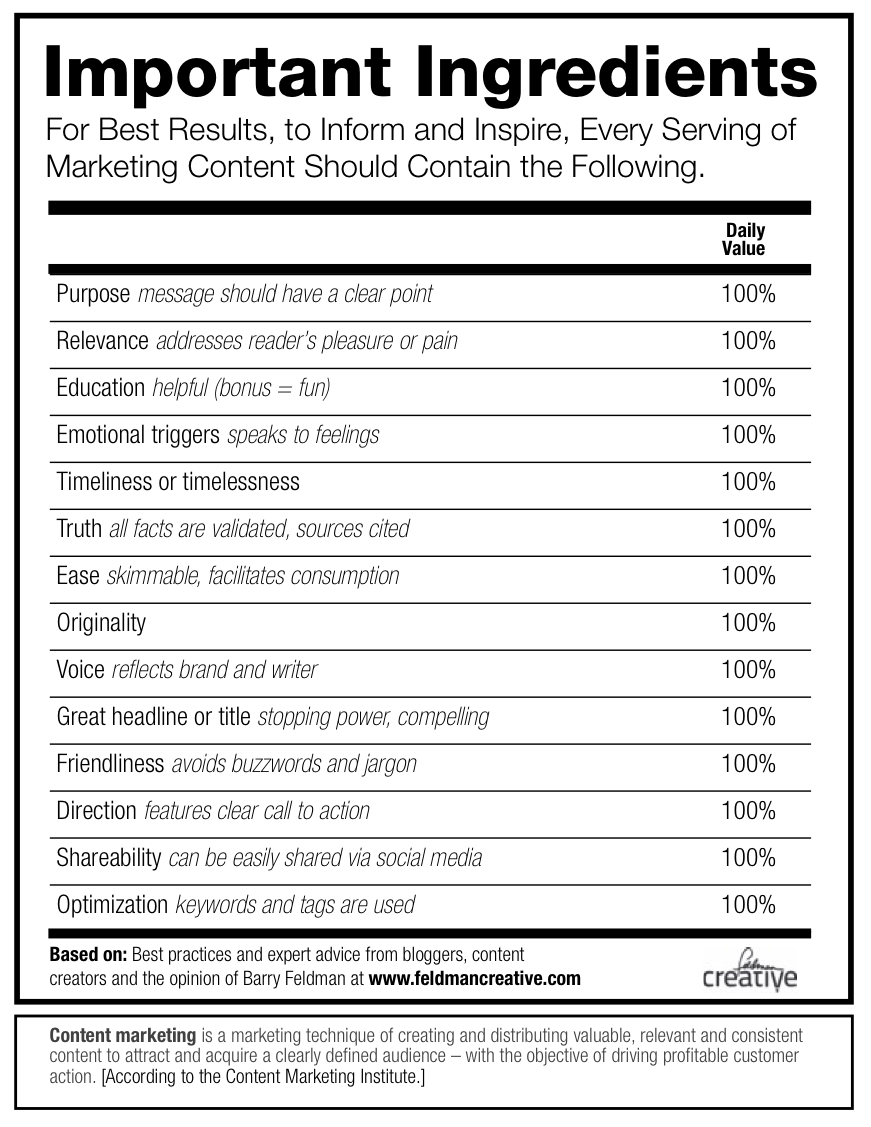
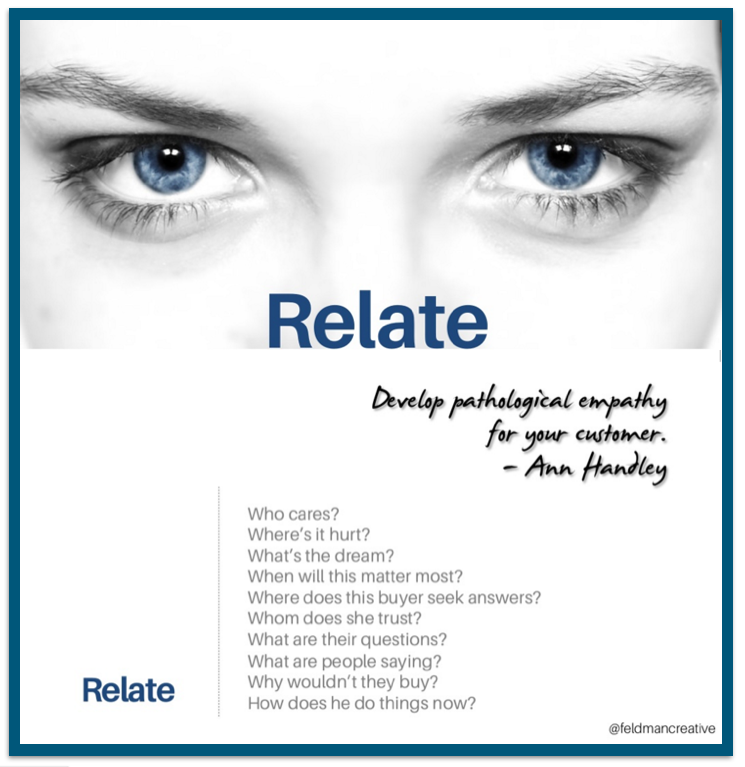
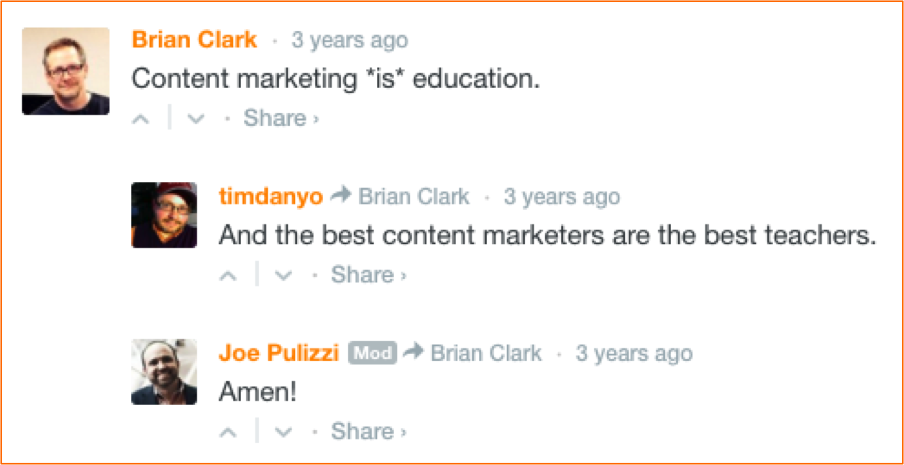
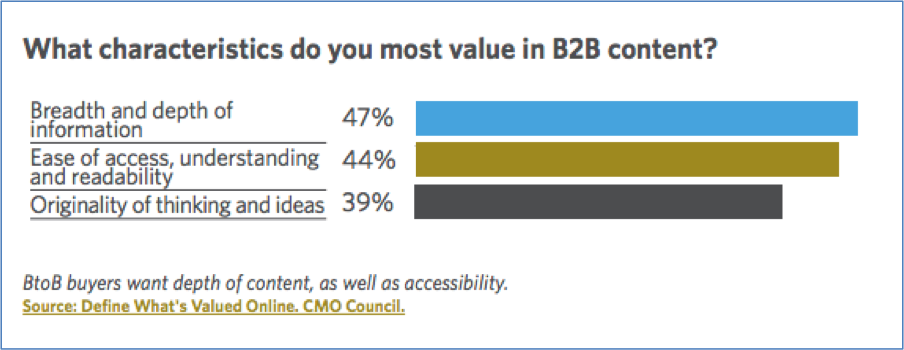

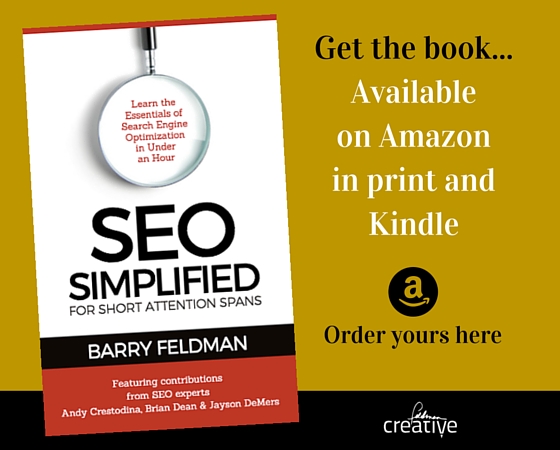




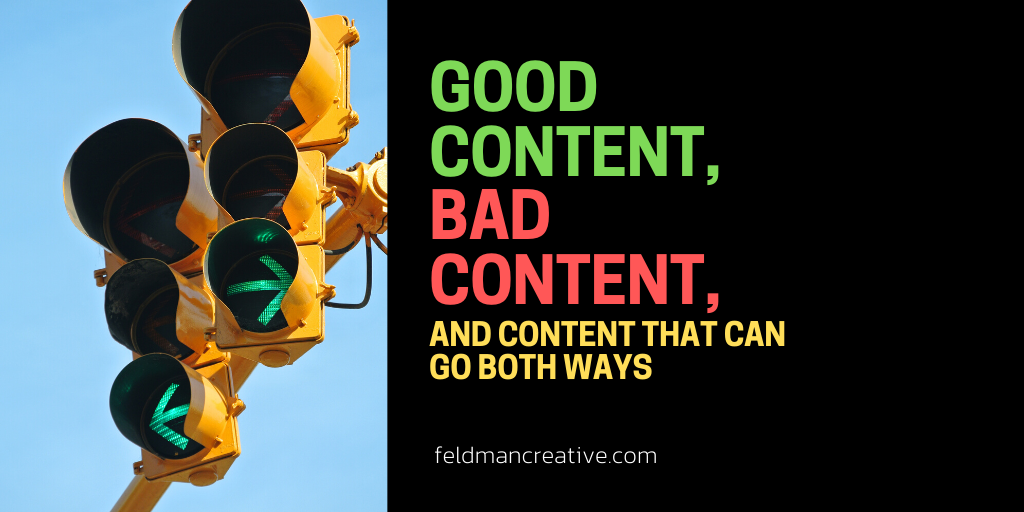
Comments
Barry Feldman
Feel free to add some ingredients…
Barry Feldman
Tell a story well and you hook your reader, so yeah, it ranks high. That said, it’s probably not a critical ingredient of any one individual piece of content though it probably is vital to a content program at large.
Alan Steinborn
What a great article! I’m curious what you think about the importance of story.
The Best Copywriters Offer Great Copywriting Secrets
[…] Want to Know How to Make Your Written Content Great? […]